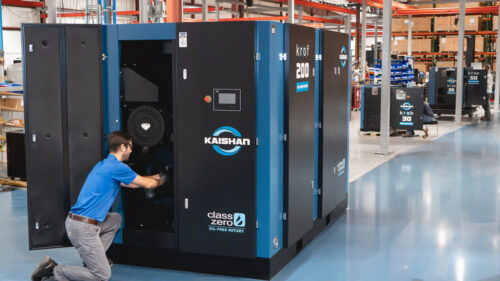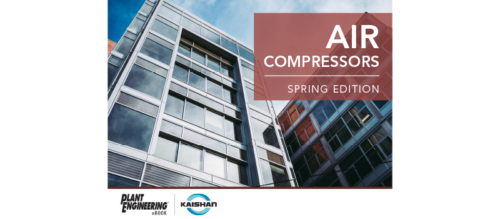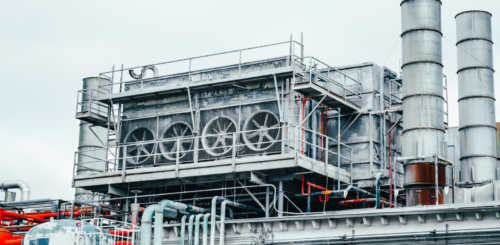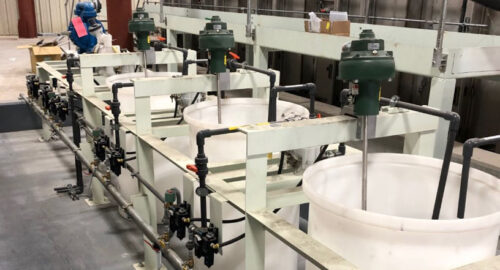Gas Technology: Direct-contact water heating
Saving energy and reducing your footprint
When you need hot water, you need it now, and you want it delivered with efficiency. A great way to achieve this is with direct-contact water heating, fueled with clean natural gas. Every year, more owners are discovering the benefits of this system for water heating that can be nearly 100% efficient. Further, it offers an immediate response to need without the energy or floor space wasted in large-volume hot water storage.
Smaller Carbon Footprint
Individuals and businesses are being asked to reduce their impact on atmospheric carbon. Thus, they have made commitments to reduce carbon emissions. Natural gas is a preferred fuel in itself because of its advantageous composition, its high combustion efficiency, and thus its inherent lower emissions of carbon oxides. For companies already using natural gas for water heating that are striving to make further reductions in their carbon footprint, direct-contact water heating offers additional gains in energy efficiency. Changing to this system can pay for itself in reduced energy costs.
Industries that frequently benefit from direct-contact systems include laundries, dairy operations, food processing plants, concrete plants, greenhouses and many other medium- to large-volume users of hot water. Potential large commercial and institutional operations include health care centers, hotels, universities, prisons, and large food-service facilities. Direct-contact units can also be used to supply hydronic heating systems and to preheat boiler-makeup water.
These systems utilize a burner that directly heats a spray or cascade of cold water. Heat and combustion products move upward as the water descends, resulting in a nearly complete utilization of the heat. Units can response very quickly to changes in the demand for hot water.
Pressure Vessel Not Required
Because they operate at atmospheric pressure, the need for a pressure vessel is eliminated, thus reducing code compliance requirements and other complications. Manufacturers offer direct-contact units in sizes ranging from 10 to 12,000 gpm. Additional capacity is available with multiple units. One industry expert notes that today’s direct-contact units are up to 99% energy efficient and can provide water heating saving of up to 40% percent.
The indirect water heating method using a steam boiler is typically less than 80% efficient, and in some cases much less. In some situations this approach allows an owner to shut down a boiler which otherwise was being fired for water heating duty only.
Most units can be modulated to adjust to varying hot water demands. This maximizes unit efficiency.
Units More Attractive Than Ever
According to John Rivers from Armstrong International’s Hot Water Group, owners are seeing savings of as much as 50% when they replace inefficient steam boilers. “However, typical savings are 30% to 40%. And from an environmental standpoint, Armstrong Flo-Direct Complete Thermal Exchange (CTE) water heaters provide a significant reduction in CO2 emissions.”
Asked about typical paybacks, Rivers says, “It all depends on how much hot water you are using and how you are heating it. For customers that are using steam as a heating medium, Armstrong has documented paybacks in as little as a few months. Other customers might expect paybacks of no more than three years.” He indicates that any industry that requires hot water generation of at least 20,000 gallons per day is a good candidate for Armstrong’s CTE technology. “More specifically, Armstrong has gained favorable acceptance within the food and beverage industries for applications such as bottle warming, patch production, wash-down and other applications.”
Rivers adds, “As businesses become increasingly concerned with driving corporate sustainability initiatives, technologies that require less fuel and leave a smaller carbon footprint naturally become more popular. To that end, Armstrong International’s CTE water heater has drawn considerable interest, in large part because of its 99.7% efficiency.
Flame Doesn’t Impinge
According to Tammy Collins from QuikWater, another major manufacturer of direct-contact water heaters, this technology is gaining converts. “This is being driven by the high efficiency and the environmentally friendly carbon-footprint.” She feels energy efficiency may be the biggest driver, but there are others. “In the food industry, unit reliability and potability of the hot water supply is also a factor.”
Collins indicates that some specific features of the QuikWater system make it unique. “We have a ‘dry fire’ design. This means that we do not allow the water stream to impinge the flame. This allows us to obtain complete combustion, giving us the lowest emissions possible and near 100% efficiency.” She indicates the QuikWater units are recognized for their reliability and durability.
Collins adds that there are some hot water situations where direct-contact heat is not appropriate. “One example is applications where you are heating or re-heating water that is already over 120° F. Water hotter than about 120° F will drop the efficiency.”
Fully Modulating Burner
Another example of the direct-contact concept is the Percomax unit manufactured by Sofame Technologies, Inc. of Montreal. In this unit, combustion occurs in a fully modulating, integrated gas burner. Cold water entering the unit at the top is uniformly distributed over the upper surface of a packing of stainless steel nodules which serve as the heat transfer medium.
The water percolates down where it comes in contact with the rising, hot products of combustion from a fully-modulating burner. Both the sensible and latent heat contained in the gas is transferred to the water. The Percomax unit is designed to heat water to temperatures as high as 185° F.
Stainless Steel Construction
The heated water collecting at the bottom of the unit is then pumped directly to the process, or across a plate and frame heat exchanger to transfer its energy to a building heating loop or process fluid. All wetted components and materials, including the unit’s shell and the packing, are entirely fabricated of stainless steel, and are covered by a 5 year guarantee. The Percomax is available in capacities varying from 1 million to 50 million Btu/hr (300 to 15,000 kW).
As another product, Sofame also offers the Percotherm condensing stack economizer, which captures the heat from a boiler exhaust or other industrial heat source and uses a direct-contact method for water heating. The heated water can be used as preheated feedwater or in any other hot water application.
Scale Growth is Minimal
Because direct-contact water heaters maintain a continuous flow of water across the heat exchange surfaces, the growth of hard-water scale is minimal or non-existent. The hardness (or softness) of the water remains unchanged through the heating process. In most direct-contact applications, the rate of water heating can keep up with plant demand. In rare instances, owners may choose to use a storage tank for hot water to meet demand surges. In situations such as food industry applications, direct-contact water heaters are available with all-stainless steel construction.
With all of the direct-contact water heating units, efficiency of the units is so high that exhaust temperatures from the units are low and can be managed without an expensive chimney. An example of the benefits of direct-contact water heating is a case study done for an installation at a facility of Cargill Foods in Toronto. Cargill uses 28,000 gallons of hot water a day at 153° F for plant washdown, laundry, domestic hot water and other needs. Previously, these needs were being met by a 4.5 MBtu water tube boiler fed with water preheated by reclaimed heat from compressor cooling water. The boiler was in need of repair or replacement and the thermal efficiencies were in the order of 40-50%, providing a significant opportunity for energy savings. The options included a new steam boiler or a direct-contact water heater.
After reviewing the options, it was determined that a direct-contact water heater was the best choice. Cargill chose a QuikWater 2500 (2.5 MBtu unit) to meet their hot water needs. Obviously, the combustion emissions and related carbon discharge impact were reduced proportionately.
Making the Change
If you’ve been contemplating making the change to direct-contact water heating, it will be useful to know peak hot water flow demand, and typical daily volume requirements. Make sure your engineering staff or consulting engineer is familiar with the products available for water heating, and ask them to size the installation for possible future changes in water demand.
The major direct-contact water heater manufacturers can help with design and sizing issues, and can coordinate delivery for an optimum installation time for your operation. With growing emphasis on optimizing energy efficiency and reducing corporate carbon footprints, now may be the ideal time to take this step forward in water heating.
The Energy Solutions Center is a non-profit organization comprised of 50 energy utilities that work together to bring new, energy efficient, natural gas solutions to commercial and industrial energy users.
Energy Solutions Center websites
aircompressor.org
cleanboiler.org
foodtechinfo.com
gasairconditioning.org
naturalgasefficiency.org
poweronsite.org
Do you have experience and expertise with the topics mentioned in this content? You should consider contributing to our CFE Media editorial team and getting the recognition you and your company deserve. Click here to start this process.





